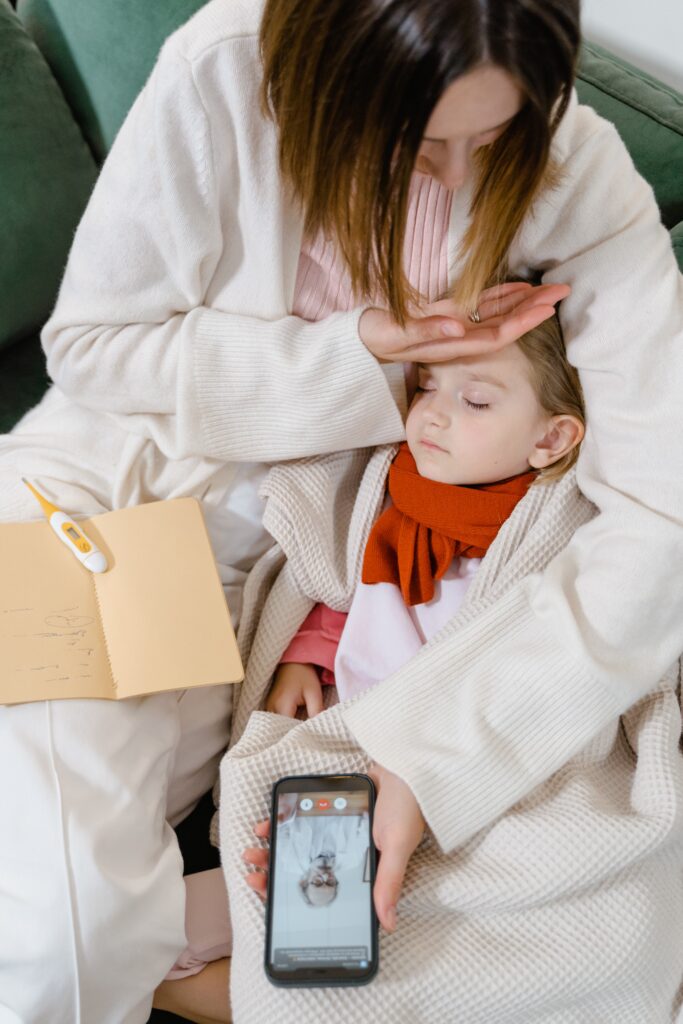
Many of us have experienced how telehealth works today: Log on to a secure website and talk to your doctor or another care provider via video. But the technology is only predicted to expand and become more detailed over the next decade, according to recent news reports.
Journalists can find interesting stories on this topic by looking at current and predicted trends such as hybrid care combining in-person and virtual components, niche telehealth programs for specialty populations, and remote physical exams in which physicians will incorporate data collected by remote tools like glucose monitors, bathroom scales and spirometers (instruments to measure air capacity in the lungs).
Virtual care “helped define the pandemic” in many ways, Mike Brandofino, CEO of telehealth technology and services company Caregility, told Healthcare IT News in a recent article. “We witnessed a spectrum of solutions take place…from switching to Zoom for doctor appointments to health care professionals putting baby monitors in rooms to monitor patients, minimizing the use of dwindling PPE (personal protective equipment) supplies while reducing the number of times a caregiver had to enter a COVID unit.”
Learning from this experience, he said, many hospitals are moving to a model in which clinicians and other staff are located in a central hub and remotely assist the floor staff in supporting inpatients using telehealth. Telehealth also can be used to allow experienced physicians or nurses to virtually coach newer clinicians or assess lower acuity patients remotely, freeing up on-site staff to care for those who are more critically ill. Virtual rounds also allow family members, language interpreters and other specialists to participate together regardless of location.
Going forward, look for hybrid care combining personal encounters and virtual appointments, Brandofino said in the article.
Some hospitals and health systems have been scaling their telehealth platforms to boost health outcomes and provide access to additional patient communities, Becker’s Hospital Review reported. Several programs are bringing specialty care to patients in smaller towns. For example, Teton Valley Hospital in Driggs, Idaho, created TeleBurn, a telehealth program allowing emergency room clinicians to consult with burn specialists off-site to help care for adults and children impacted by burn and frostbite injuries.
Intermountain Cassia Regional Hospital in Burley, Idaho, launched Pediatric TeleHealth Consults to connect its emergency room providers with regional pediatric trauma and critical care specialists to help diagnose complex cases. A pediatric telecritical care nurse can also tune in to help answer questions for nurses on-site administering treatment to patients.
Larger hospitals also are launching new efforts. Boston Children’s Hospital partnered with virtual care platform Summus Global to allow its specialists to reach more patients, including scaling up an online second opinion program that virtually connects patients with a pediatric physician from the hospital to review medical records for a second assessment or to answer questions about a diagnosis, the Becker’s article noted.
Impacts on emergency medicine and medical exams
Telehealth could be further integrated into emergency medicine, according to an article published last December in the New England Journal of Medicine Catalyst. The coauthors, both emergency medicine physicians, discussed how emergency care needs to be reimagined “beyond the four walls of the ED,” potentially using telehealth to triage patients, directing them to the location best matched to their needs, and allowing ED providers to devote their resources to those requiring immediate in-person attention.
“We believe the future of emergency care will involve development of a ‘virtual ED’ where emergency care providers can render remote care in a lower-cost environment,” they wrote. “For some patients, this can be performed through a smartphone app, and they may not require further diagnostic testing. For other patients, it may require a telemedicine assessment with a referral for expedited diagnostic testing in outpatient facilities, urgent care centers or the hospital, with processes established so patients can walk in [for testing], then walk out and receive their follow-up recommendations virtually. For others, it may be a referral to the appropriate primary care physician or specialist, or a home visit by a community paramedic with or without telemedicine backup.”
“The growing suite of services and advances in the virtual health care arena will give rise to some providers becoming virtualists,” they said.
Telehealth technology also potentially could be used for remote medical examinations. A startup company backed by the University of Cincinnati Venture Lab is pairing patient kits containing medical tools such as a blood pressure monitor and pulse oximeter with a clinical app and web portal, which could allow physicians to examine patients and remotely perform physical exams, including listening to patient hearts and lungs, according to a university news release.
The end of the term “telehealth?”
The terms telehealth and virtual care may phase out of our lexicon over the coming years as the technology becomes more integrated into our regular standard of care, a panel of health care executives said during a June 1 discussion on the future of telehealth.
“There’s nothing virtual about it,” said Richard Zane, M.D., chief innovation officer for the University of Colorado Health, during Becker’s Healthcare’s “Shift to Digital” virtual conference. “It’s technology-enabled actual care.” Over the next decade, he said, look for artificial intelligence or other platforms to collect data that better inform medical decisions. “Physicians and providers are going to learn how to use AI just like we learned how to use stethoscopes to help patients’ physical diagnosis.”
As consumers use online portals to book or modify airline tickets, health care platforms could evolve so you have a primary care physician in one state, a specialist in another and be able to fly to the best place possible to have a particular medical procedure, Zane said.
But fear not, he said: “What we are not going to see is doctors and humans being replaced by AI and technology. What we will see are health care providers who can use AI and technology replace health care providers who can’t.”
Additional resources
- Telehealth 2.0: How Providence is taking its platform to the next level – an article from Becker’s Hospital Review
- Digital Health + Health IT podcast episode with Todd Czartoski, M.D., chief medical technology officer and chief of telehealth at Providence
- Children’s + more scaling telehealth programs – an article from Becker’s Hospital Review
- How telehealth can help inpatient care, and what a hybrid future looks like – an article from Healthcare IT News
- The Availabilists: Emergency Care without the Emergency Department – a commentary from NEJM Catalyst
- UC startup makes health care more convenient, equitable – a University of Cincinnati news release
- How a Texas health system spun up a virtual ICU – an article from Healthcare IT News







